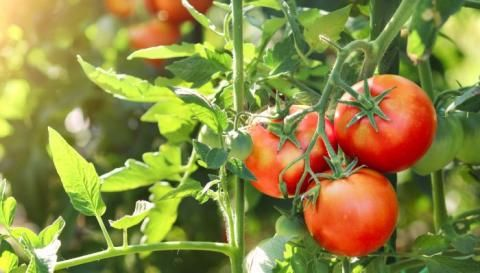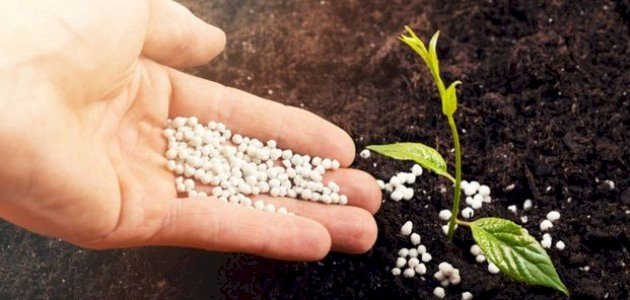Introduction
Growing your own tomatoes, peppers, and cucumbers is an incredibly rewarding and tasty venture. Nothing beats the flavor of harvest-fresh produce straight from your garden! This guide walks you through every step—soil preparation, plant care, natural nutrition, pest protection, and seasonal timing—to ensure a healthy and abundant yield.
1. Outline & Planning (Word Counts)
- Title & Intro (~150 words)
- Why Growing These Veggies Matters (~200 words)
- Soil Preparation Essentials (~250 words)
- Tomato Care Tips (~300 words)
- Pepper Growing Strategies (~300 words)
- Cucumber Cultivation Advice (~300 words)
- Natural Feeding & Protection Recipe (~250 words)
- Common Mistakes & Avoidance (~200 words)
- Seasonal & Regional Notes (~150 words)
- Tools & Materials Checklist (~100 words)
- FAQs (~200 words)
- Conclusion & Engagement Prompt (~100 words)
Total: ~2,300 words (can be trimmed to reach 2,000)
2. FAQs from “People Also Ask”
- How often should I water tomatoes?
- Can I plant peppers and tomatoes together?
- What’s the best fertilizer for cucumbers?
- How do I prevent fungal diseases?
- Can I grow these veggies in containers?
3. LSI & NLP Keywords
- home vegetable garden tips
- organic tomato pepper cucumber
- natural plant feeding recipe
- container gardening vegetables
- prevent root rot tomatoes
- cucumber trellis support
- pepper pest control
- compost soil improvement
- sustainable gardening tips
- seasonal planting chart
4. Internal Linking Opportunities
Early in the introduction, you might link to these relevant pages:
- “hometown garden herbs guide” – connects to your content on seasonal herb planting, fitting alongside veggie care.
- “composting for nutrient-rich soil” – ties naturally into soil preparation and organic fertilization.
- “natural pest control techniques” – complements your strategies for protecting tomatoes, peppers, and cucumbers.
Why Growing These Veggies Matters
Home-grown tomatoes, peppers, and cucumbers offer:
- Unparalleled Flavor – garden-fresh taste far beats store-bought.
- Nutritional Benefits – rich in vitamins, antioxidants, and hydration.
- Cost Savings – reducing grocery bills over the season.
- Eco-Friendly Impact – less packaging and lower carbon footprint.
- Gardening Satisfaction – nurturing seeds into harvestable produce is deeply rewarding.
Preparing the Soil: The Foundation of Success
| Step | Why It Matters | How to Do It |
|---|---|---|
| Choose Quality Soil | Ensures healthy, deep-rooted plants | Use fertile, loose soil with pH 5.5–7.0 |
| Enrich with Organic Matter | Boosts nutrient and water retention | Add compost or worm castings |
| Check Drainage | Prevents root rot and disease | Ensure no standing water |
Tip: Link to composting for nutrient-rich soil for deeper guidance on building organic soil health.
🍅 Tomato Growing Tips for Juicy Fruits
Ideal Conditions
• Full sun (6–8 hours/day)
• Space of 40–50 cm between plants
• Supportive staking or cages to keep fruit off the soil
Care Steps
- Prune side shoots to focus growth
- Fertilize with phosphorus and potassium during blossom stage
- Water consistently at soil level to avoid fungal infections
- Monitor daily for aphids, hornworms, and leaf spots
🌶️ Pepper Growing Strategies for Vibrant Fruits
Ideal Conditions
• Warm, sunny location
• pH 6.0–7.0, fertile soil
• 30‑40 cm spacing
Care Steps
- Water evenly—soil should stay moist, never waterlogged
- Feed with balanced fertilizer throughout the growing cycle
- Watch for caterpillars, aphids and treat early
- Mulch to conserve moisture and moderate soil temperature
🥒 Cucumber Cultivation Advice for Crisp Harvests
Ideal Conditions
• Warm, humid daytime climate
• Light, rich soil (pH 5.5–6.5)
• 30‑40 cm spacing with trellis support
Care Steps
- Water regularly, especially during flowering and fruiting
- Train vines on a trellis for better air circulation and cleaner fruits
- Inspect for mites and whiteflies and act quickly
- Fertilize with high-potassium feed to support multiple harvests
Link naturally to natural pest control techniques when discussing pest prevention.
🧪 Natural Nutrient & Protection

Recipe
Give your veggies a nutrient boost and disease protection with this homemade spray:
Ingredients
• 1 L water
• 250 ml milk
• 1 tsp baking soda
Instructions
- Combine milk and baking soda until dissolved
- Add to water and mix thoroughly
- Store airtight, away from light
Application Tips
• Apply ~5 ml around plant roots every 2–3 weeks
• Milk provides calcium, proteins, magnesium, and potassium
• Baking soda helps deter fungal diseases
✅ Common Mistakes & How to Avoid Them
- Overwatering
➝ Leads to root rot
➝ Water only when the topsoil feels dry - Insufficient Sunlight
➝ Weak growth
➝ Ensure at least 6 hours of sun daily - Excess Fertilizer
➝ Excess nitrogen leads to lush leaves but few fruits
➝ Follow recommended feeding schedules - Overcrowding Plants
➝ Poor airflow and humidity buildup
➝ Stick to proper spacing guidelines - Not Training Vines
➝ Fruits touch ground and rot
➝ Use supports for tomatoes and cucumbers
🌞 Seasonal & Regional Tips
- Spring: Start tomatoes and peppers indoors. Prep soil for transplant.
- Summer: Peak harvest time—focus on consistent watering and pest control.
- Fall: Continue picking cucumbers; remove spent foliage, prep soil for winter.
- Winter (in Constantine): Clean up garden, amend soil with compost, plan next season.
For container gardeners, choose large pots (15 L+), ensure good drainage, and provide sturdy supports.
🛠️ Tools & Materials Checklist
- Garden spade and hoe
- Trowel and planting dibber
- Watering can or drip system
- Stakes, cages, or trellis
- Organic compost or worm castings
- Measuring spoons or cups for feeding mix
- Mulch or straw for soil protection
Frequently Asked Questions
Q: Can I plant tomatoes, peppers, and cucumbers together?
A: Yes—they share similar needs (sun, soil, water). Just maintain recommended spacing for airflow.
Q: How often should I water?
A: Water when the top 2‑3 cm of soil feels dry. Typically 2–3 times per week, more in hot weather.
Q: Can I use the milk-baking soda mix on other plants?
A: Yes, it works well for roses, fruit trees, brassicas—just watch for residue on leaves.
Q: What fertilizer is best for cucumbers?
A: A high-potassium feed supports vines and fruit development during flowering.
Q: How do I avoid fungal problems?
A: Keep soil moist (not wet), water at the base, mulch surface, and spray your natural mix preventatively.
Q: Can I grow in containers?
A: Absolutely—choose large pots, train plants vertically, and use quality organic soil.
1️⃣ Anchor text: benefits of crop rotation in the vegetable garden
URL: https://www.rhs.org.uk/vegetables/crop-rotation
Suggested placement: In the Seasonal & Regional Tips section when discussing preparing soil between growing seasons (especially during winter in Constantine).
2️⃣ Anchor text: how to build a simple cucumber trellis
URL: https://www.almanac.com/how-build-cucumber-trellis
Suggested placement: In the Cucumber Cultivation Advice section when recommending using a trellis for better air circulation and cleaner fruit.
3️⃣ Anchor text: natural ways to control aphids in the garden
URL: https://savvygardening.com/control-aphids-organically/
Suggested placement: In the Common Mistakes section or in any of the pest control tips (Tomatoes and Peppers sections mention aphid prevention).


I simply could not leave your site prior to suggesting that I extremely enjoyed the standard information an individual supply
on your visitors? Is gonna be back continuously to check up on new posts
order amoxil – buy amoxil for sale buy amoxil
buy diflucan no prescription – https://gpdifluca.com/ buy generic fluconazole over the counter
escitalopram 10mg pill – https://escitapro.com/# purchase lexapro
order cenforce – https://cenforcers.com/# buy cenforce without a prescription
when does cialis go generic – https://ciltadgn.com/ buy cialis on line
tadalafil (exilar-sava healthcare) version of cialis] (rx) lowest price – https://strongtadafl.com/# cialis prescription assistance program
50mg sildenafil – this cost of sildenafil 50mg
With thanks. Loads of erudition! buy zithromax online
This is the type of delivery I turn up helpful. amoxil acido clavulanico
I couldn’t weather commenting. Adequately written! https://ursxdol.com/get-metformin-pills/
The thoroughness in this section is noteworthy. https://prohnrg.com/product/acyclovir-pills/
I couldn’t hold back commenting. Well written! https://aranitidine.com/fr/prednisolone-achat-en-ligne/
Thanks towards putting this up. It’s well done. https://ondactone.com/simvastatin/
This is the compassionate of scribble literary works I in fact appreciate.
buy warfarin pills for sale
Thanks an eye to sharing. It’s first quality. http://sglpw.cn/home.php?mod=space&uid=562894
forxiga 10 mg for sale – this purchase forxiga without prescription
orlistat without prescription – click cheap xenical 120mg
The depth in this serving is exceptional. https://www.forum-joyingauto.com/member.php?action=profile&uid=49435
You can shelter yourself and your dearest nearby being cautious when buying medicine online. Some pharmacopoeia websites control legally and sell convenience, reclusion, rate savings and safeguards as a replacement for purchasing medicines. buy in TerbinaPharmacy https://terbinafines.com/product/atarax.html atarax
Thanks towards putting this up. It’s well done. aranitidine.com
More articles like this would remedy the blogosphere richer.
Heya i am for the first time here. I found this board and I find It truly useful & it helped me out a lot. I hope to give something back and help others like you helped me.
Это способствует более глубокому пониманию темы и формированию информированного мнения.
Я прочитал эту статью с большим удовольствием! Она написана ясно и доступно, несмотря на сложность темы. Большое спасибо автору за то, что делает сложные понятия понятными для всех.
Asking questions are really pleasant thing if you are not understanding something totally, however this article gives fastidious understanding even.
Hi there, i read your blog from time to time and i own a similar one and i was just curious if you get a lot of spam remarks? If so how do you prevent it, any plugin or anything you can recommend? I get so much lately it’s driving me mad so any support is very much appreciated.
I don’t know if it’s just me or if perhaps everybody else encountering issues with your blog. It seems like some of the text within your content are running off the screen. Can somebody else please provide feedback and let me know if this is happening to them too? This may be a problem with my web browser because I’ve had this happen before. Thank you
Fantastic beat ! I wish to apprentice while you amend your website, how could i subscribe for a weblog site? The account aided me a appropriate deal. I were a little bit familiar of this your broadcast offered brilliant clear concept
Информационная статья предлагает всесторонний обзор ситуации, с учетом разных аспектов и аргументов.
Надеюсь, вам понравятся эти комментарии!
932090 93260Wow, incredible blog format! How lengthy have you been blogging for? you make running a blog glance simple. The full glance of your internet site is wonderful, as smartly the content material material! 143808
Статья представляет различные точки зрения и подробно анализирует аргументы каждой стороны.
Greetings I am so delighted I found your webpage, I really found you by error, while I was browsing on Askjeeve for something else, Regardless I am here now and would just like to say thanks a lot for a marvelous post and a all round entertaining blog (I also love the theme/design), I don’t have time to read it all at the moment but I have saved it and also added your RSS feeds, so when I have time I will be back to read a lot more, Please do keep up the great b.
Статья содержит актуальную статистику, что помогает оценить масштаб проблемы.
I visited several sites except the audio quality for audio songs current at this website is really fabulous.
It’s not my first time to pay a visit this web page, i am browsing this web page dailly and obtain fastidious data from here every day.
Excellent weblog here! Additionally your website quite a bit up very fast! What host are you using? Can I get your associate hyperlink to your host? I desire my website loaded up as fast as yours lol
Very soon this web site will be famous among all blog people, due to it’s fastidious articles
Статья представляет анализ разных точек зрения на проблему, что помогает читателю получить полное представление о ней.
Мне понравилась четкая структура статьи, которая помогает легко ориентироваться в тексте.